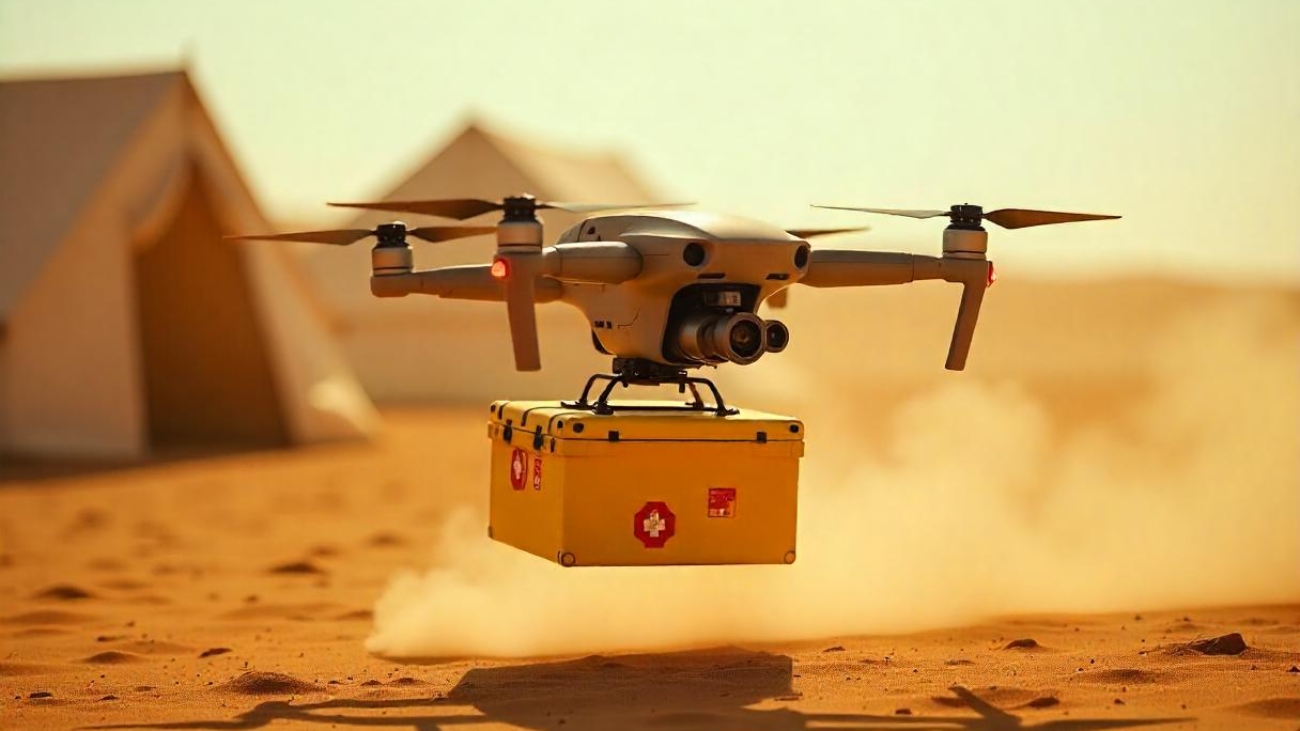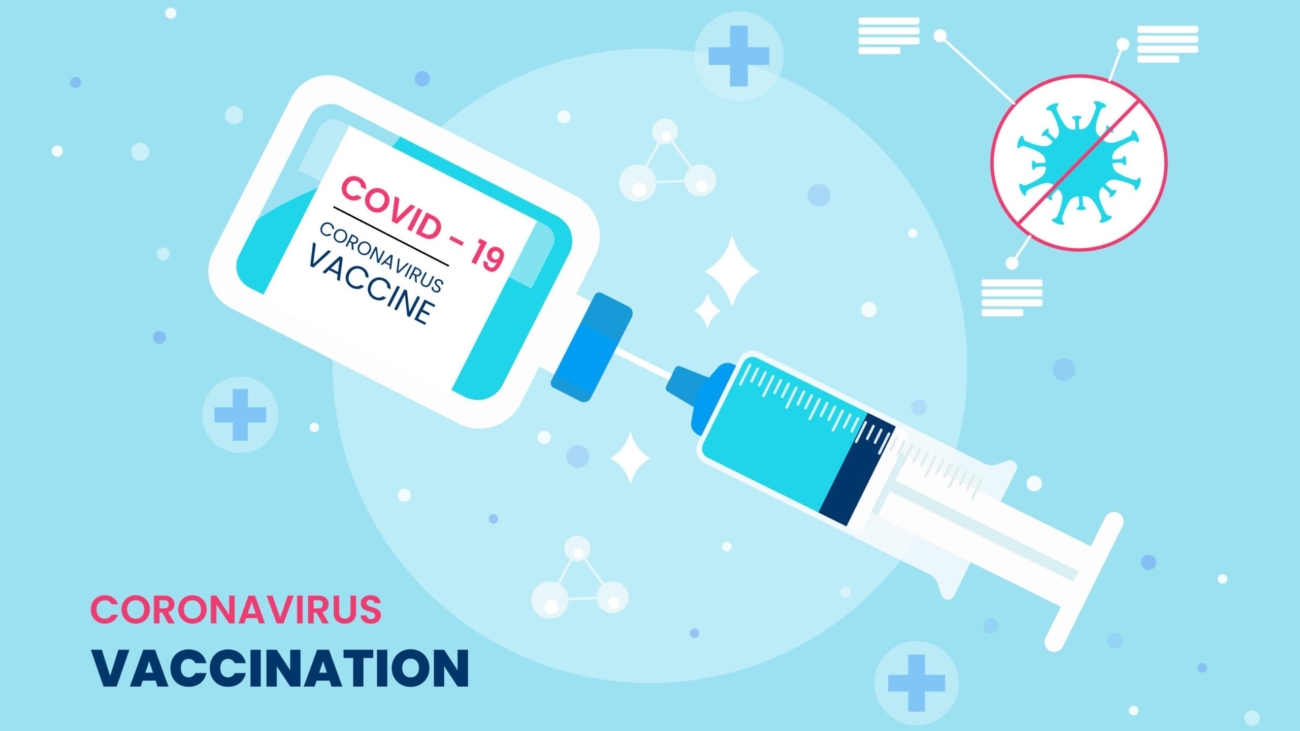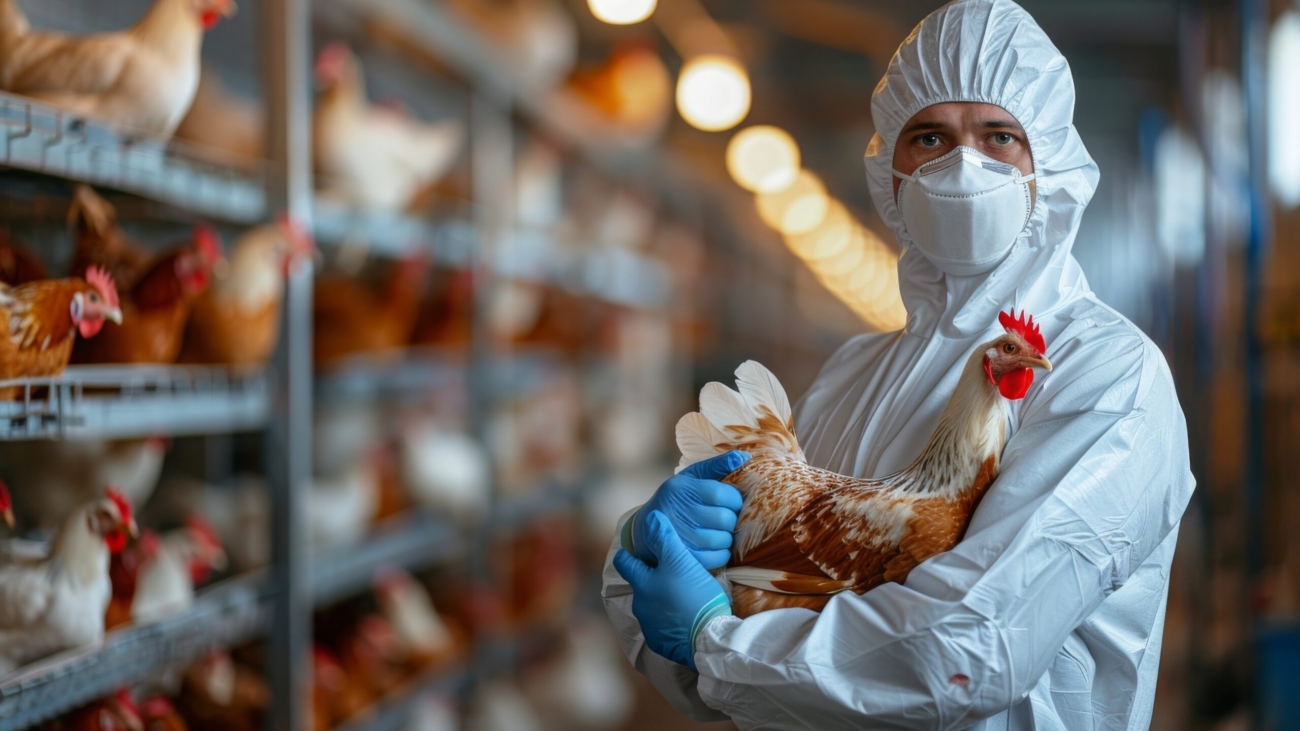Written By: Priya Bhaware, M.Pharm Pharmacology
Reviewed and Fact-Checked By: Vikas Londhe, M.Pharm Pharmacology
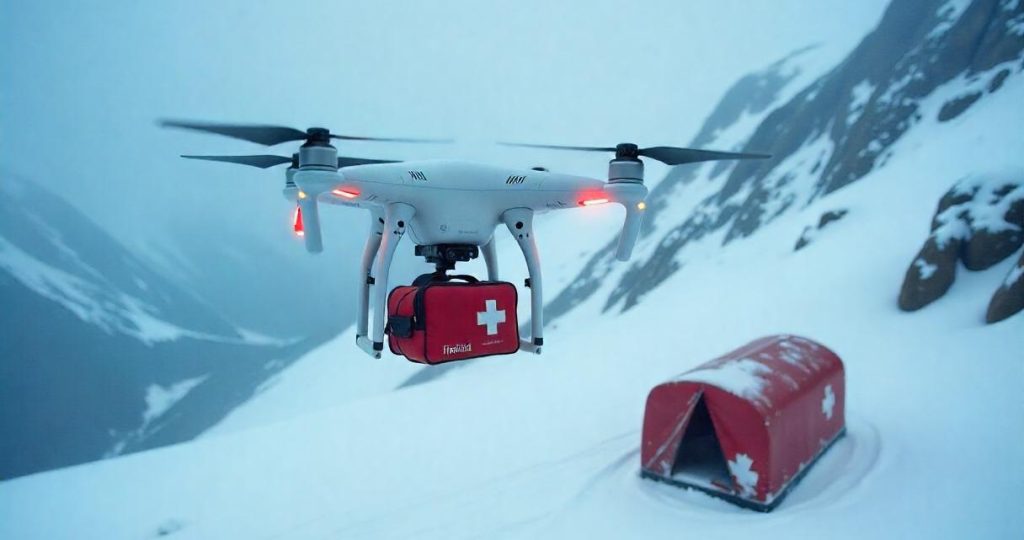
Discover how drones are transforming emergency medical services with faster response times, real-world success stories like Rwanda’s Zipline, and the science behind drone-assisted critical care delivery
Introduction: A Race against Time
Imagine a rural village nestled deep in the hills, 30 miles from the nearest hospital. A 45-year-old farmer collapses from a sudden cardiac arrest. His family called the local emergency helpline, but due to poor roads and distance, the ambulance would take over 45 minutes. His survival window is less than 10 minutes. But something extraordinary happens within 4 minutes: a drone appears in the sky, delivering an automated external defibrillator (AED) to the family. Trained via mobile video instructions, they use the AED, and the man’s heartbeat is revived.
This is not science fiction; it is the future of emergency medical care, powered by drones.
In emergencies, rapid access to life-saving medical supplies can mean the difference between life and death. Countless lives are lost each year during the crucial minutes immediately following a medical crisis. Every minute saved in delivering help can increase the chance of survival by up to 10%.
Drones are changing the landscape of emergency medical services (EMS) by offering a faster, more efficient, and cost-effective channel of delivering assistance in medical emergencies. A drone’s ability to be set out in a flash enables it to reach medical emergency ground zero quickly, facilitating rapid assessment, locating patients, and delivering essential medical supplies and equipment, often overtaking traditional response methods. This improved response time can significantly enhance patient outcomes and sometimes save the life of the patient, especially in remote or underserved areas.
Drone Enhanced Medical Emergency Services
Drone Emergency Medical Services (DEMS) use highly independent Beyond Visual Line of Sight (BVLOS) drones to speedily deliver vital medical supplies such as Automated External Defibrillators (AEDs), critical medications, and diagnostic equipment directly to medical emergency locations such as cardiac arrest, stroke, postpartum hemorrhage, anaphylaxis, or trauma, where even a few minutes’ delay can cost lives.
Traditional emergency services are while life-saving but face several limitations, like traffic delays in urban settings or poor road infrastructure in rural regions, slow ambulance dispatch times, and limited reach in remote or disaster-prone areas.
Unmanned Aerial Vehicles (UAVs), commonly known as drones, are emerging as vital tools in healthcare logistics. Capable of bypassing traffic and terrain-related barriers, they can access both densely populated urban centers and hard-to-reach rural locations. The need for faster and more efficient emergency responses, especially in underserved or isolated areas, highlights the expanding role of drones in enhancing emergency medical services (EMS).
Drones can be deployed within seconds to deliver critical medical equipment ahead of ambulance arrival, while also transmitting real-time aerial footage to enhance situational awareness and support informed decision-making. In large-scale disasters or mass casualty incidents, they play a crucial role in coordinating resources and minimizing exposure risks for emergency personnel
Clinical Trials and Pilot Studies: Evidence behind the Buzz
Karolinska Institute, Sweden: Out-of-hospital cardiac arrest (OHCA) trial
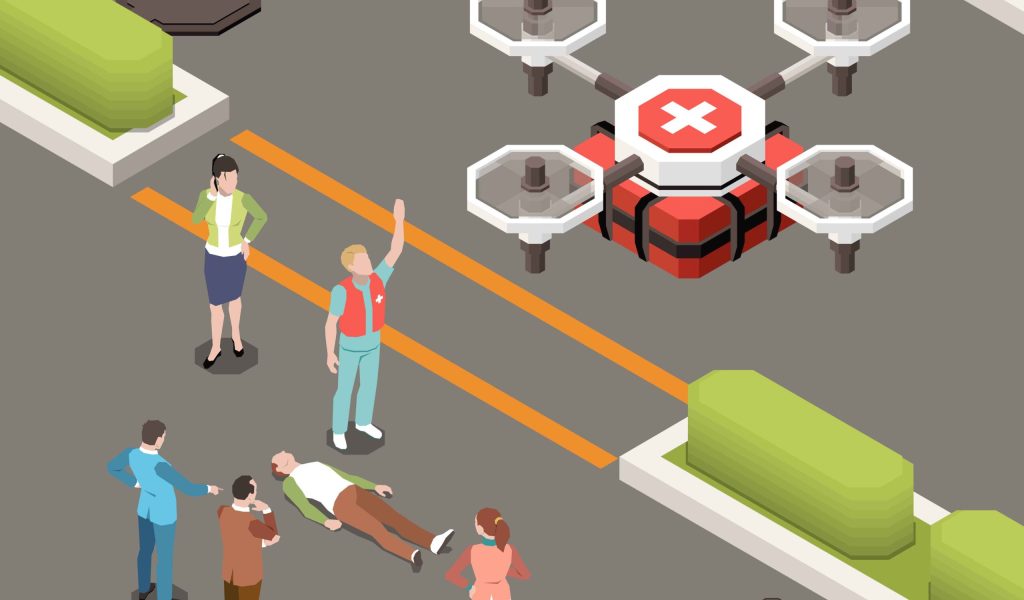
One of the most influential studies in this field was published in the New England Journal of Medicine (NEJM) in December 2022, titled “Drone Delivery of an Automated External Defibrillator.” Conducted in Sweden, this interventional trial evaluated the effectiveness of drones delivering AEDs (Automated External Defibrillators) in out-of-hospital cardiac arrest (OHCA) scenarios. The study involved 18 actual cardiac arrest cases in which drones were dispatched in parallel with emergency medical services. In 64% of these cases, the drones arrived before ambulances, achieving a median time saving of 2 minutes and 15 seconds—a significant reduction considering that survival from cardiac arrest drops by 7–10% for every minute without defibrillation. In three instances, bystanders successfully retrieved and used the drone-delivered AEDs before EMS arrived, marking a critical advancement in community-assisted emergency care. Importantly, no safety incidents were reported, proving the operational feasibility of drone delivery in populated areas.
U.S. FAA and WakeMed Hospital (North Carolina)
In the United States, a notable pilot project by WakeMed Hospital in North Carolina, in collaboration with UPS Flight Forward and Matternet, focused on transporting laboratory samples via drones. Over 2,000 successful drone flights were completed, demonstrating a 30–40 minute reduction in turnaround time for diagnostic tests a crucial factor in speeding up emergency treatment decisions, especially in stroke, sepsis, or trauma cases.
Zipline’s Internal Data (Rwanda & Ghana)

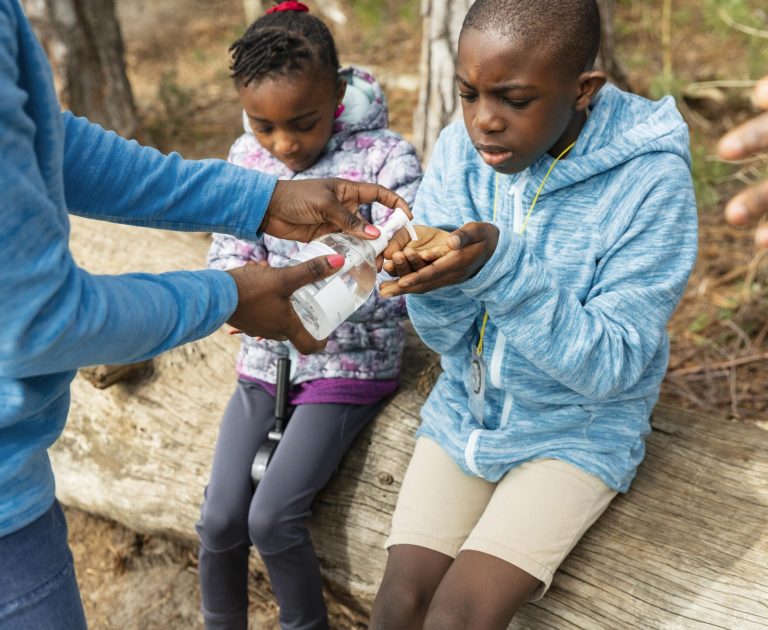
Internationally, perhaps the most impactful real-world data comes from Zipline, a drone logistics company operating in Rwanda and Ghana. Though not part of a randomized clinical trial, Zipline has released comprehensive operational metrics. The drones have completed over 1 million deliveries, primarily of blood products, vaccines, antivenoms, and emergency medications, often to hard-to-reach rural clinics. Their data show a 75% reduction in delivery time compared to traditional ground transportation. In Rwanda, these drones have been especially critical in delivering blood for postpartum hemorrhage a leading cause of maternal mortality helping save thousands of lives by eliminating fatal delays.
India—Medicine from the Sky Project
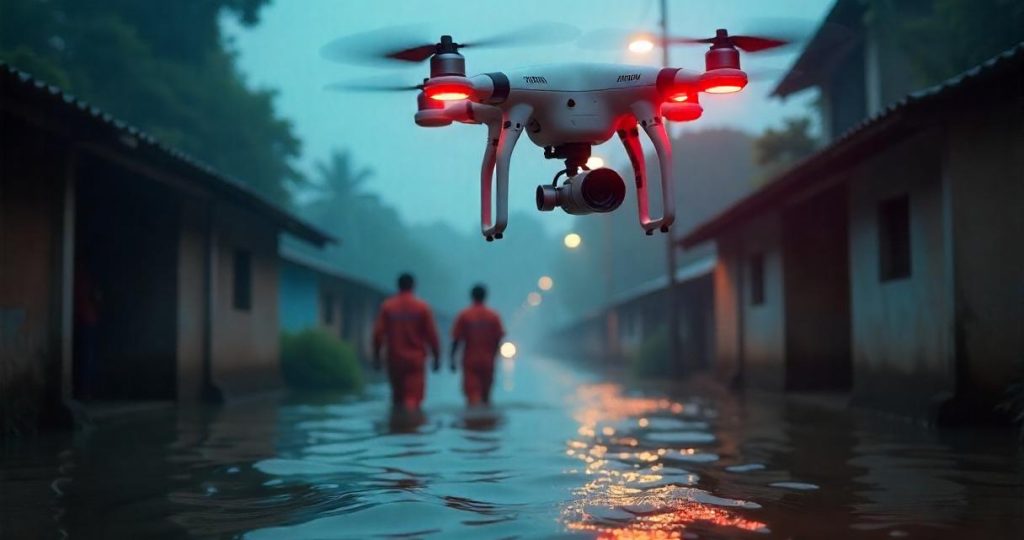
In India, the government-led initiative “Medicine from the Sky” launched in Telangana and Himalayan regions and also tested the use of drones in delivering vaccines and emergency medications to remote tribal areas. This pilot, supported by the World Economic Forum and private healthcare providers, proved that drones could reduce delivery time by 20–30 minutes per mission and operate effectively across difficult terrain. Healthcare workers reported high levels of trust in the technology, and the pilot was deemed a success in improving access to urgent care supplies.
Step By Step Process of Drone Delivery
1. Emergency call triggered: When an emergency call (911/112) is made, both the Drone-Enhanced Emergency Medical Services (DEMS) and traditional EMS are activated simultaneously, ensuring a swift and coordinated response for faster on-site assistance.
2. Drone dispatched immediately: Within seconds, a DEMS drone is launched, carrying essential life-saving medical supplies such as defibrillators, haemorrhage control kits, or Naloxan. Its dynamic payload system allows for efficient customization based on the specific emergency, ensuring the right tools reach the scene as quickly as possible.
3. Arrival within 2-3 minutes: The DEMS drone reaches the emergency scene within 2–3 minutes—far faster than conventional EMS vehicles. It delivers critical equipment directly to bystanders or citizen responders on-site, empowering them to take immediate, potentially life-saving action before professional help arrives.
4. Real-time guidance provided: Using live video feeds and two-way communication, dispatchers guide bystanders through the process of administering life-saving actions, such as CPR, defibrillation, or the application of anti-bleeding kits. This ensures intervention is effective before EMS teams arrive.
5. EMS arrival and follow-up: Traditional EMS teams usually arrive within 9–10 minutes; however, by that time, crucial life-saving measures have often already been initiated by bystanders, guided by dispatchers, and equipped by DEMS drones. This early intervention greatly increases the patient’s chances of survival
Challenges
Airspace regulations and FAA compliance
Limited payload capacity (3-5 kg)
Battery life and weather limitations
Need for real-time coordination with EMS
Conclusion: A Sky Route for Saving Lives
Drones are revolutionizing emergency medical services by enabling faster, more efficient delivery of critical aid. They significantly reduce response times, especially in remote or congested areas, and improve patient outcomes through early intervention. Drones are not replacing emergency medical services they are augmenting them, creating a hybrid model where technology bridges critical care gaps in time and location. From Rwanda’s blood drops to India’s tribal medicine delivery, drones have ascended from concept to clinical impact.
As infrastructure, regulations, and technology evolve, drone-enhanced EMS is poised to become the new norm in global emergency care delivering not just medicines, but hope and life.
References
Revolutionized Healthcare: Drone Based Medical Services for Remote Healthcare and Emergency Response, available from https://www.aerogo.live/post/revolutionized-healthcare-drone-based-medical-services-for-remote-healthcare-and-emergency-response#:~:text=Here’s%20how%20drones%20are%20transforming,and%20enhance%20emergency%20response%20capabilities.
Sanz-Martos S, Lopez-Franco MD, Álvarez-García C, Granero-Moya N, Lopez-Hens JM, Camara-Anguita S, Pancorbo-Hidalgo PL, Comino-Sanz IM. Drone applications for emergency and urgent care: a systematic review. Prehospital and disaster medicine. 2022 Aug;37(4):502-8. DOI: 10.1017/S1049023X22000887
Habibi S, Ivaki N, Barata J. A Systematic Literature Review of Unmanned Aerial Vehicles for Healthcare and Emergency Services. arXiv preprint arXiv:2504.08834. 2025 Apr 10. https://doi.org/10.48550/arXiv.2504.08834
Schaerbeek S, Svensson L, Claesson A. Use of a drone-delivered automated external defibrillator in an out-of-hospital cardiac arrest. New England Journal of Medicine. 2022 May 19; 386(20):1953-4. Doi:10.1056/NEJMc2200833
Aggarwal S, Gupta P, Mahajan N, Balaji S, Singh KJ, Bhargava B and Panda S (2023) Implementation of drone based delivery of medical supplies in North-East India: experiences, challenges and adopted strategies. Front. Public Health 11:1128886. Doi: 10.3389/fpubh.2023.1128886Sharma S, Sharma H. Drone a technological leap in health care delivery in distant and remote inaccessible areas: A narrative review. Saudi J Anaesth. 2024 Jan-Mar;18(1):95-99. Doi: 10.4103/sja.sja_506_23. Epub 2024 Jan 2. PMID: 38313723; PMCID: PMC10833029.
Amukele, Timothy, Using drones to deliver blood products in Rwanda, The Lancet Global Health, Volume 10, Issue 4, e463 – e464
Rwanda signs agreement with zipline to use drones for delivery of essential medical products https://www.minict.gov.rw/news-detail/rwanda-signs-agreement-with-zipline-to-use-drones-for-delivery-of-essential-medical-products
Hospital Uses FAA-Approved Drones for the First Time, he American Society of Mechanical Engineers.
Medicine from the Sky: Community Outcomes of Drone Deliveries in the Himalayan Region, World Economic Forum
https://www3.weforum.org/docs/WEF_Medicine_from_the_Sky_2024.pdf
Step-by-step breakdown of DEMS, https://dems.se/


